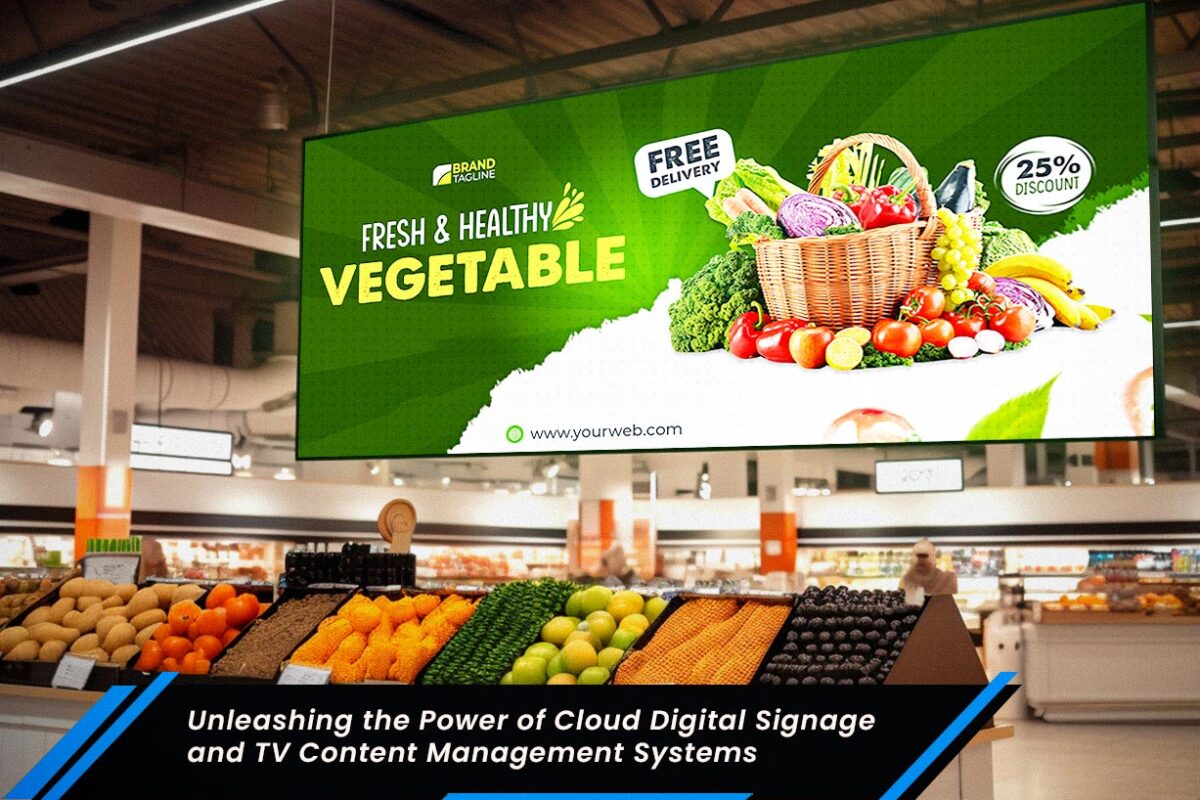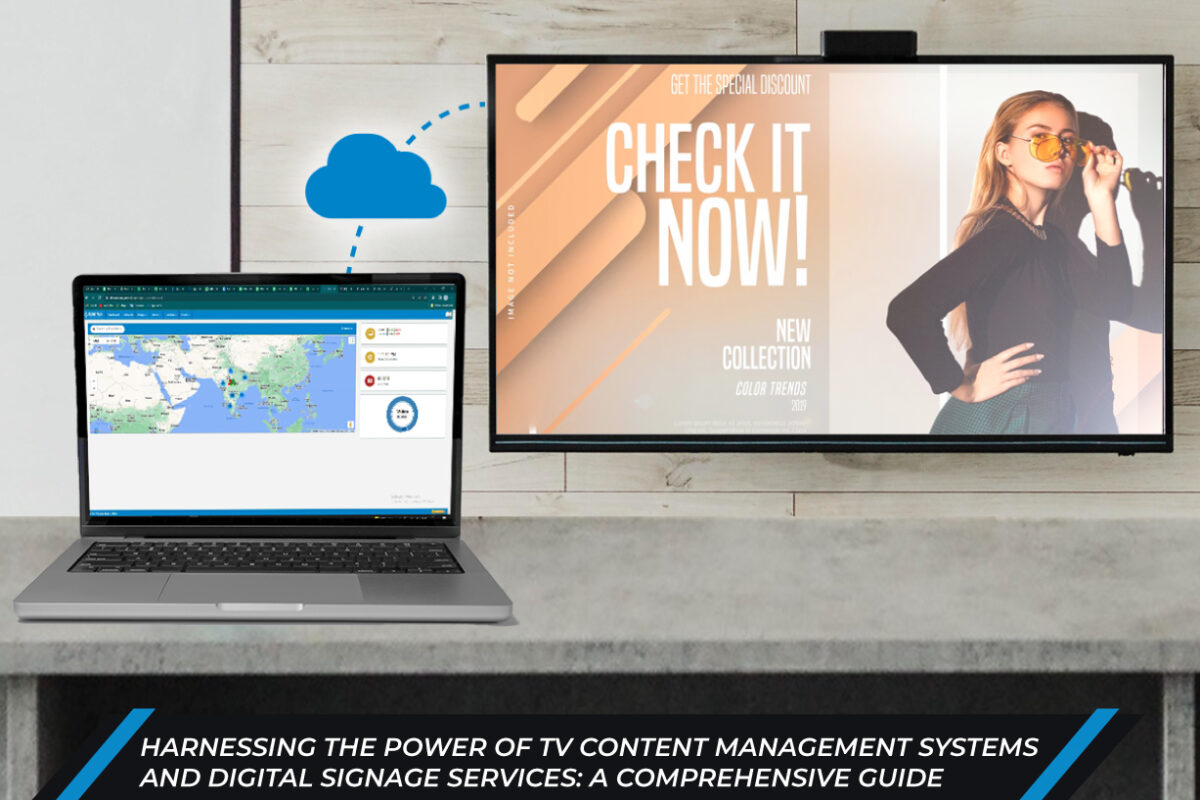Introduction
In the era of digital transformation, businesses are continually seeking innovative ways to enhance communication and engagement. One such revolutionary technology that has gained prominence is cloud digital signage, coupled with advanced TV content management systems. This blog post takes a deep dive into the synergy between cloud technology and digital signage, exploring the benefits, features, and the transformative impact of these solutions in a variety of industries.
I. The Evolution of Digital Signage
1. Traditional Challenges:
Before the advent of cloud digital signage, traditional systems faced challenges such as cumbersome updates, limited scalability, and high maintenance costs. Content changes required manual interventions, leading to delays and inefficiencies in conveying real-time information.
2. Rise of Cloud Technology:
The integration of cloud technology with digital signage marked a significant leap forward. Cloud-based solutions leverage the power of the internet to store, manage, and distribute content, offering unparalleled flexibility, scalability, and accessibility. This shift has transformed the landscape of digital signage, making it more dynamic and responsive to the fast-paced demands of modern communication.
II. Understanding Cloud Digital Signage
1. Definition and Components:
Cloud digital signage refers to the use of cloud computing infrastructure to deliver and manage digital content on displays. This approach eliminates the need for on-premises servers and allows for centralized content management. Components include display screens, media players, and a cloud-based content management system (CMS).
2. Benefits of Cloud Digital Signage:
– Scalability: Cloud solutions enable easy scaling to accommodate changing requirements, whether expanding to multiple locations or adjusting content volume.
– Remote Management: Administrators can manage and update content remotely, providing real-time control and flexibility.
– Cost Efficiency: Cloud-based models eliminate the need for extensive hardware infrastructure, reducing initial setup costs and ongoing maintenance expenses.
3. Use Cases Across Industries:
– Retail: Dynamic pricing updates, product promotions, and interactive displays enhance the in-store shopping experience.
– Education: Cloud digital signage in educational institutions facilitates timely information dissemination, event promotions, and campus-wide communication.
– Corporate: From office lobbies to meeting rooms, cloud digital signage streamlines internal communication, displaying company updates, announcements, and KPIs.
III. TV Content Management Systems (TV CMS)
1. Definition and Functionality:
A TV Content Management System (CMS) serves as the backbone for organizing, scheduling, and delivering content to television displays. It allows users to create, edit, and manage multimedia content efficiently.
2. Key Features of TV CMS:
– User-Friendly Interface: Intuitive interfaces with drag-and-drop functionalities make it easy for users to create visually appealing content.
– Multi-Channel Management: TV CMS systems often support multiple channels, enabling diverse content scheduling and display options.
– Integration Capabilities: Seamless integration with external data sources, social media feeds, and other content repositories enhances the richness of displayed content.
3. Benefits of TV CMS:
– Centralized Control: TV CMS allows for centralized control of content across multiple screens and locations, ensuring uniformity in messaging.
– Automated Scheduling: Content scheduling features enable automated playback of content at specified times, facilitating efficient content management.
– Real-time Updates: Instantaneous content updates and scheduling changes ensure that information is always current and relevant.
IV. Integration of Cloud Digital Signage and TV CMS
1. Synergy between Cloud and TV CMS:
The integration of cloud digital signage with TV CMS creates a potent combination for delivering impactful content. Cloud-based infrastructure ensures seamless content distribution, while TV CMS provides the tools for content creation, scheduling, and management.
2. Remote Accessibility and Collaboration:
With cloud digital signage, content creators and administrators can access the system from anywhere, facilitating collaboration and ensuring that information is updated in real time. This is particularly valuable for businesses with multiple locations or remote teams.
3. Dynamic Content Scheduling:
The integration allows for dynamic and personalized content scheduling. Administrators can tailor content based on factors such as time of day, audience demographics, or special events, maximizing the effectiveness of communication.
V. Advanced Features and Innovations
1. Interactivity and Engagement:
Cloud digital signage and TV CMS systems are evolving to include interactive features. Touchscreen capabilities and interactive displays enable users to engage with content, transforming passive viewers into active participants.
2. Data Analytics and Insights:
Advanced analytics tools integrated into these systems provide valuable insights into viewer behavior. Metrics such as dwell time, content interaction, and popular display locations help businesses refine their content strategy for optimal impact.
3. Artificial Intelligence (AI) Integration:
The incorporation of AI enhances the personalization of content. AI algorithms analyze viewer data to deliver targeted content, creating a more tailored and engaging experience. This is particularly relevant in retail and advertising scenarios.
VI. Security and Privacy Considerations
1. Data Security in the Cloud:
As businesses entrust their content to cloud-based signage, ensuring robust security measures is paramount. Encryption, access controls, and regular security audits are essential to protect sensitive information.
2. Privacy Compliance:
Adherence to data protection regulations is crucial. Businesses using cloud digital signage and TV CMS must ensure compliance with privacy laws, especially when collecting and analyzing viewer data.
VII. Future Trends and Outlook
1. Edge Computing Integration:
The integration of edge computing with cloud digital signage aims to reduce latency by processing data closer to the source. This enhances the responsiveness of interactive displays and supports real-time content updates.
2. 5G Connectivity:
The rollout of 5G networks promises faster and more reliable connectivity, further enhancing the capabilities of cloud-based digital signage. High-speed data transmission facilitates the seamless streaming of high-quality content.
3. Augmented Reality (AR) Experiences:
The convergence of AR with cloud digital signage opens up new possibilities for immersive experiences. Businesses can create augmented reality content that overlays digital information onto the physical environment, creating engaging and interactive displays.
Conclusion
In conclusion, the integration of cloud digital signage with TV content management systems represents a transformative force in the realm of communication technology. From scalable and flexible content delivery to real-time updates and interactive capabilities, the synergy between these technologies has reshaped how businesses engage with their audiences. As we look towards the future, the ongoing innovations in AI, edge computing, and connectivity promise to further enhance the capabilities of these systems, ushering in a new era of dynamic and personalized communication. Embracing these technologies is not just a technological upgrade; it’s a strategic investment in the future of effective communication.


